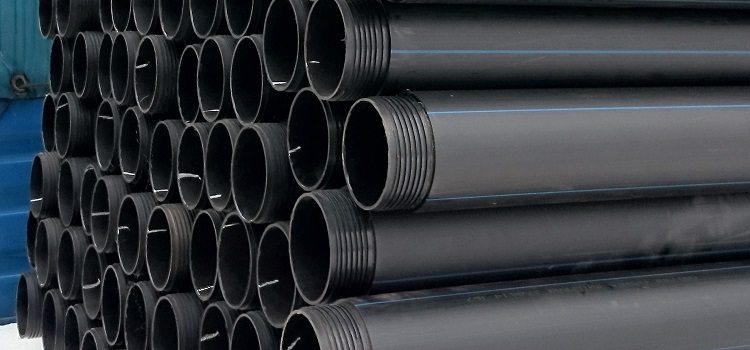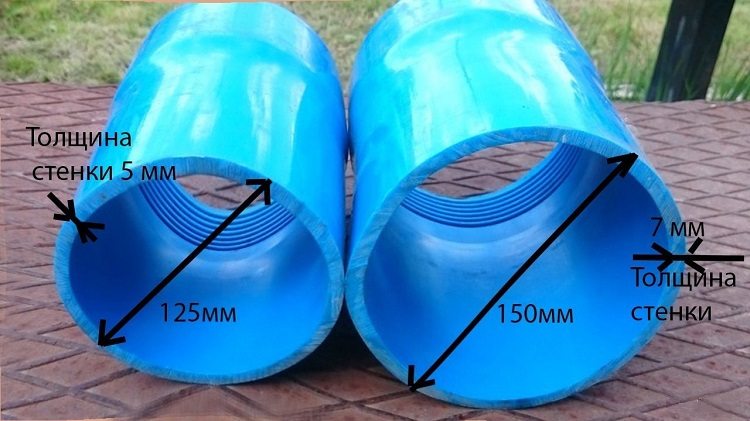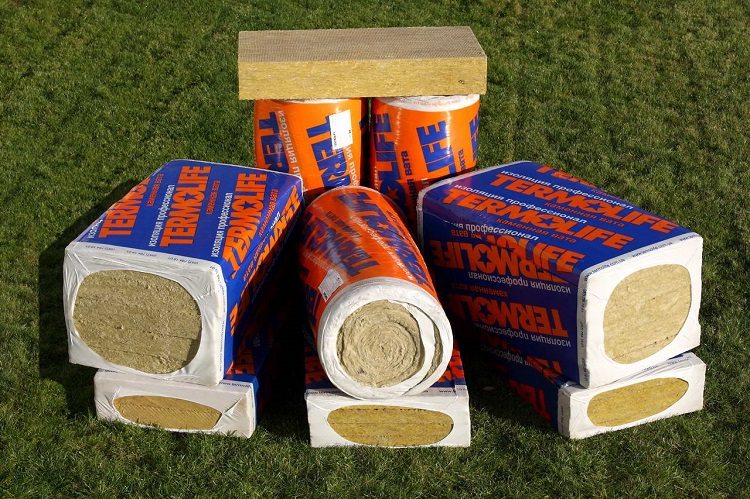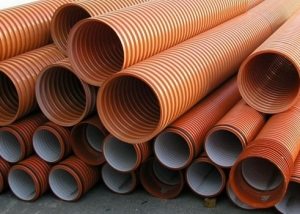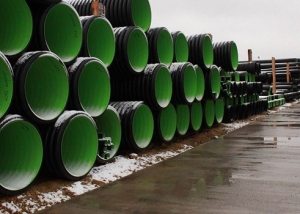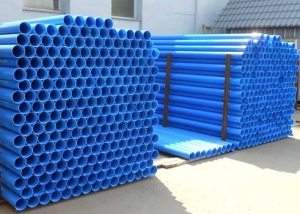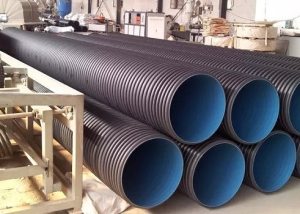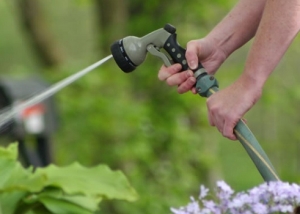Water supply in private houses or in summer cottages is often organized by means of wells or boreholes. For the correct operation of such sources are used casingthrough which water will flow into the home pipeline. Upsetting structures are needed so that the soil in the well does not crumble and does not fall into the system. HDPE casing pipes for threaded wells are the most optimal option for these purposes.
Content
How to choose a pipe for casing? Advantages of casing HDPE pipes
In addition to plastic materials, metal and asbestos cement are used in the production of casing pipes. These types of products have significant drawbacks, so low-pressure polyethylene (HDPE) is now used almost everywhere. HDPE casing pipes for threaded wells have enough advantages:
- light weight, low cost and ease of transportation;
- threaded connection allows installation without special tools;
- plastic does not emit harmful substances and does not change the composition of the fluid passing through the system;
- the dense structure of the material, which is not subject to corrosion, provides strength to the products.
Also, PND casing pipes have the ability to adjust the length of the system by building additional modules. Threaded connections provide complete tightness, while the load on the joints will be minimal. In case of damage to the pipeline section, the segment can be replaced easily, quickly and at no particular cost.
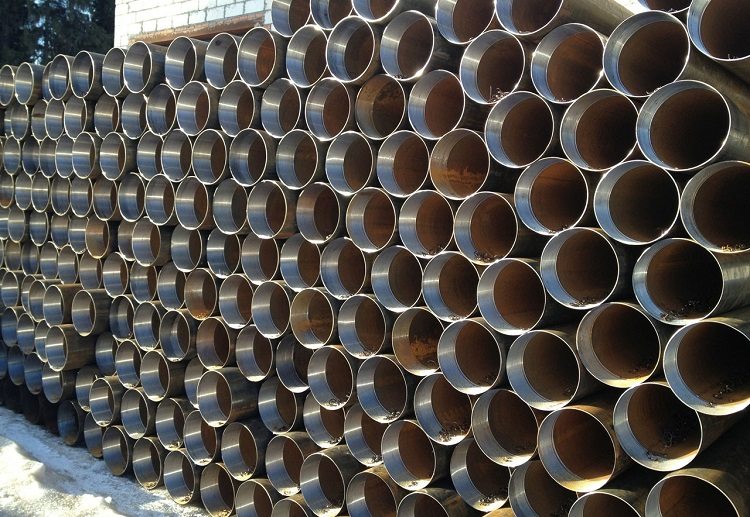
Steel pipes are the best option for casing, but if the well is not deep, then they will be successfully replaced by polyethylene products
HDPE pipes can perform their functions in the temperature range from -70 to +80 degrees. It is especially important that the structure of the plastic is not affected by the low temperatures that prevail in soil sources.
The main disadvantages of casing plastic pipes
The disadvantage of HDPE pipes is that such structures are not plastic enough and are strong in bending. This fact should be taken into account during installation: it is necessary to place the product in a well-drilled well, without soil protrusions and thresholds.
Helpful advice! Sometimes, steel products are used to enter the pipe into the well, followed by replacement with HDPE casing. This will prevent damage to the plastic structure.
Polyethylene pipes are suitable for casing wells with a depth not exceeding 100 m. For deeper wells, it is more advisable to use metal structures, since HDPE may not withstand such pressure.
If you have to drill a well in stony ground, it is also advisable to use steel pipes. Systems in limestone soils function better when casing with asbestos-cement pipes. Upsetting HDPE pipes for threaded wells are excellent mainly for clay and sandy types of soils.
The use of plastic pipes for casing wells
The diameter and wall thickness of the PND casing for threaded wells will depend on the depth at which the aquifer will be located.
Water can be located close to the soil surface (top layer), in the soil layer and at high depths of 40-250 meters (artesian waters). In the upper layer, water is usually collected from precipitation. It is not suitable for drinking and is used only for household purposes. Groundwater undergoes a significant degree of purification due to passing through layers of sand and clay. It is precisely these wells that are most often drilled in the house and summer cottage areas because of the availability of work and the high quality of the water received.
Polyethylene pipes are successfully used in all cases. HDPE casing pipe for threaded wells for groundwater supply systems will have a diameter of 125 mm. Products with this diameter can optimize the system without increasing the cost of drilling a wide well.
Helpful advice! At large depths, it is possible to arrange the column in a telescopic way, when the diameter of each lower segment will differ from the upper one by 50 mm.
To immerse the string lower than 10 m, it is better not to use casing with a wall thickness of less than 8 mm. To build a well with a depth of 50 m or more, thick-walled HDPE pipes with a wall thickness of 10 mm or more are required.
Materials for warming HDPE pipes
The issue of warming a well should be asked before it is equipped. For the best functioning of the system in the cold season, it is necessary to isolate both the surface of the well and the casing HDPE for wells with or without thread, and water supply to the house.
In choosing a heater for polyethylene pipes, you need to focus on the climatic conditions of the area. If the depth of freezing of the soil exceeds 1.5 meters, which is typical for the northern regions, comprehensive measures are taken to isolate the system. The insulation of HDPE pipes underground is carried out using mineral wool or roofing material. Pipes located on top of the ground are insulated with the same materials, but with the use of construction foil as protection against precipitation. A more expensive but effective method of warming underground structures is a heating cable.
To supply water from the well, you can purchase a ready-made insulated pipe PND. It is laid in the ground on a sand cushion. In general, the installation of pipes with insulation does not differ from the installation of conventional HDPE products. If you want to connect a regular HDPE pipe with a heat pipe, adapters are used.
The procedure for warming the well
The head of the well can be equipped with a plastic caisson or insulated box, if the climate in the region is quite mild. For insulation materials, a trench 1–1.5 m deep is dug (depending on the depth of freezing of the soil). In the box, you can place the necessary equipment: pump station or expansion tank. The depth of the pit for the caisson will be at least 2 m.
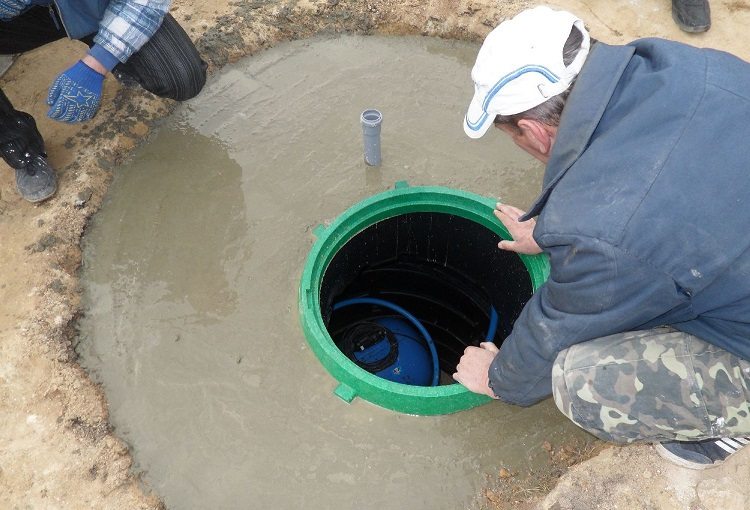
Caisson will help protect the well not only from frost, but also from getting into the pipe groundwater
Helpful advice! There is a high likelihood of freezing water in systems used irregularly. Even if winter temperatures in the region do not fall below -15 degrees, but the well only works in the summer, it is better to equip high-quality insulation. This will reduce the risk of system failure.
After laying the trench, the neck of the well is cut to the level of the floor of the box. The floor of the box is equipped with a cover made in accordance with the diameter of the pipe. You can use ready-made insulation covers for wells or make it your own hands from wood (metal) and mineral wool material.
HDPE casing pipes for threaded wells are recommended to be wrapped with plastic or metal material. To better maintain heat, leave a distance of 5 cm between the pipe and the insulating layer.The air gap will provide additional protection against freezing. The air gap can also be filled with sawdust.
At very low winter temperatures, electronic heaters are installed in close proximity to the well. Casing and water pipes are wrapped with wires that are heated from the mains. The heating wires should be pulled in plastic corrugated pipes to prevent the circuit from closing. The box in which the heater will be located must be well ventilated.
With the right choice of casing type and method of insulation, the plumbing system will last a long and high quality. Drilling facilities at great depths should be carried out by specialized organizations, as the technological error made can nullify all the results of the work. And re-drilling in the same place is no longer possible.
